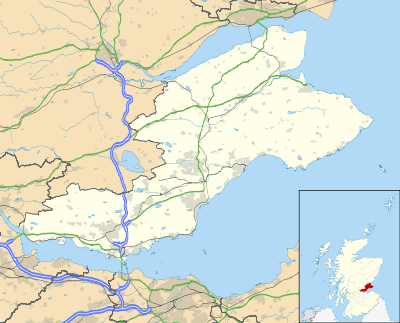Balmerino
Balmerino is a small village and former monastic centre in Fife, Scotland. It is the home of Balmerino Abbey and the former abbots of Balmerino who were great regional landlords. It became a secular lordship (see Lord Balmerino) at the beginning of the 17th century and fell into ruin. The Abbey ruins and grounds are managed by the National Trust for Scotland and are famed for the ancient sweet chestnut tree and the display of aconites which flower in February. The village is now an official Conservation Area.
| Balmerino | |
|---|---|
 | |
 Balmerino Location within Fife | |
| OS grid reference | NO3624 |
| Council area | |
| Country | Scotland |
| Sovereign state | United Kingdom |
| Post town | NEWPORT-ON-TAY |
| Postcode district | DD6 |
| Dialling code | 01382 |
| Police | Scotland |
| Fire | Scottish |
| Ambulance | Scottish |
| UK Parliament | |
| Scottish Parliament | |


The name Balmerino derives from Scottish Gaelic. The first element, bal-, is from baile, meaning a farmstead, or in modern Gaelic, a town. The second element is more obscure. It may refer to Saint Merinach[1] or it may derive from muranach meaning 'of sea-grass', yielding: "[the] farm where sea-bent or sea-grass grows."[2]
Balmerino is also "celebrated" by a poem by William McGonagall – widely recognised to be the English language's worst poet: "Beautiful Balmerino".
See also
External links
| Wikimedia Commons has media related to Balmerino. |
References
- Taylor, Iain (2011). Place-names of Scotland (PDF). Birlinn.
- "Balmerino". Fife Place-name Data.